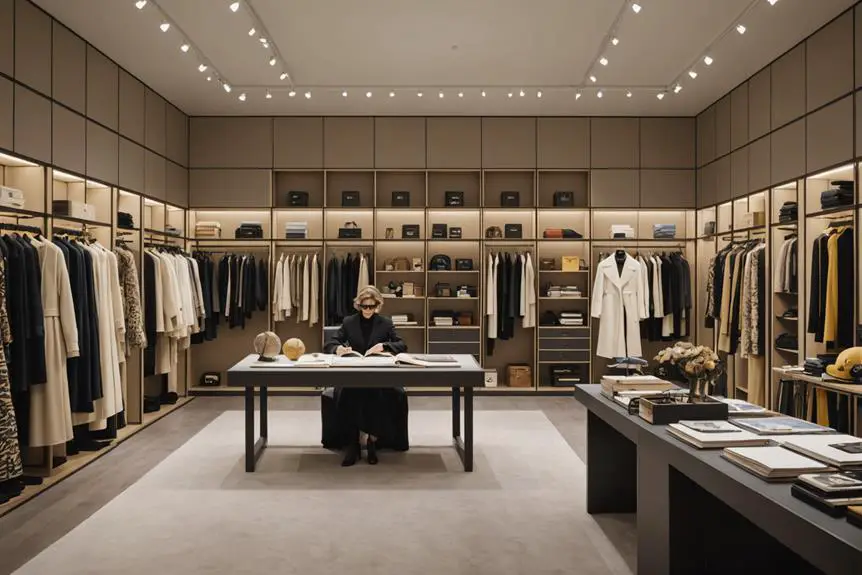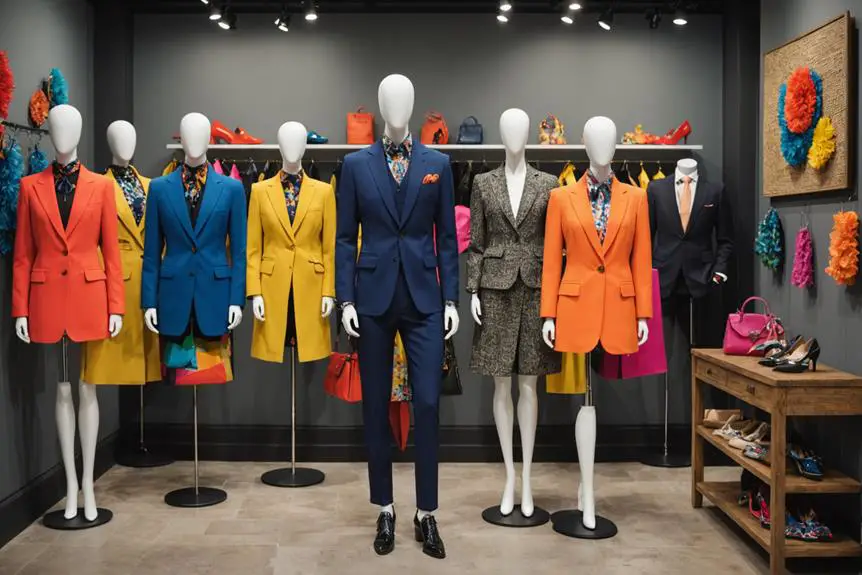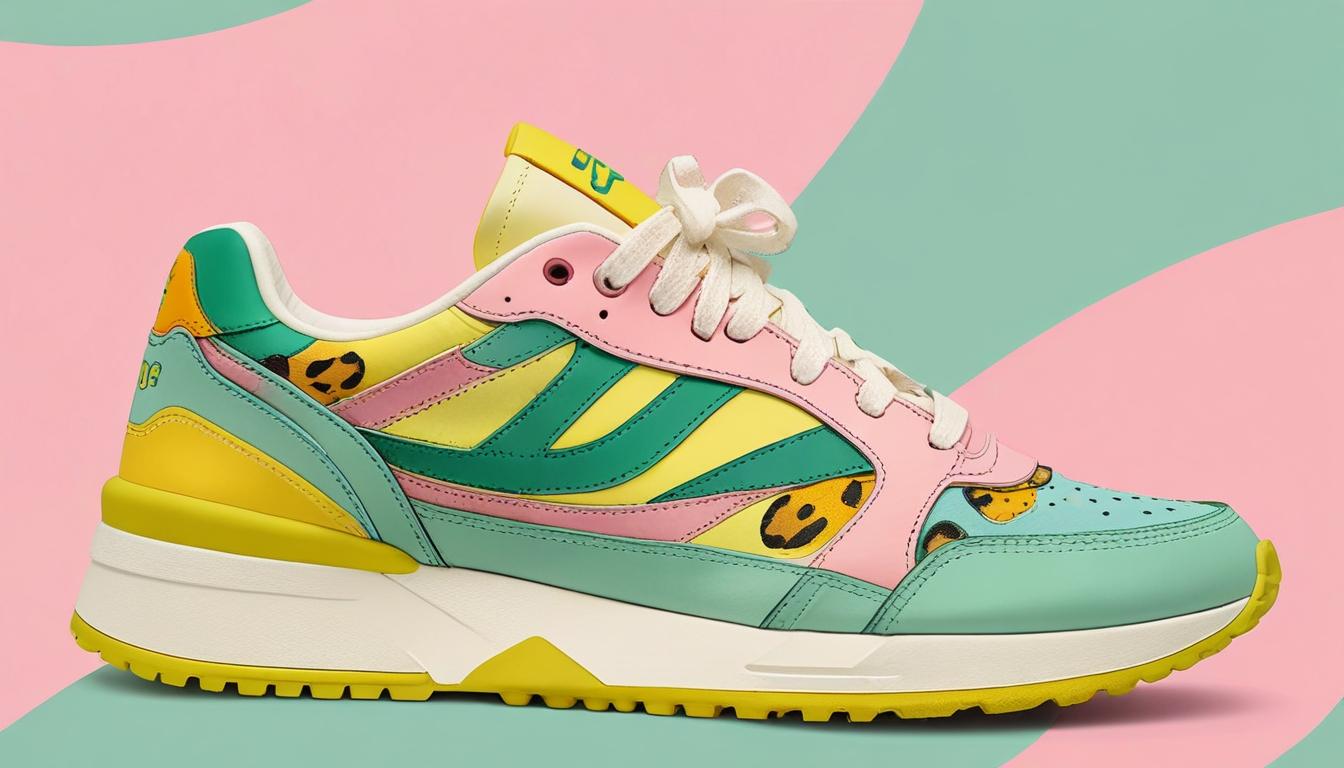Imagine stepping into a world where creativity dances with tradition, each piece whispering stories of innovation and heritage. You might think of Karl Lagerfeld, whose vision redefined Fendi for decades, or the fresh perspectives brought by current designers like Kim Jones and Silvia Venturini Fendi. As you consider their unique contributions, it becomes clear that Fendi's evolution is a tapestry woven from past and present. What does this blend mean for the future of luxury fashion, and how do these designers navigate the delicate balance between legacy and modernity?
Overview of Fendi Designers
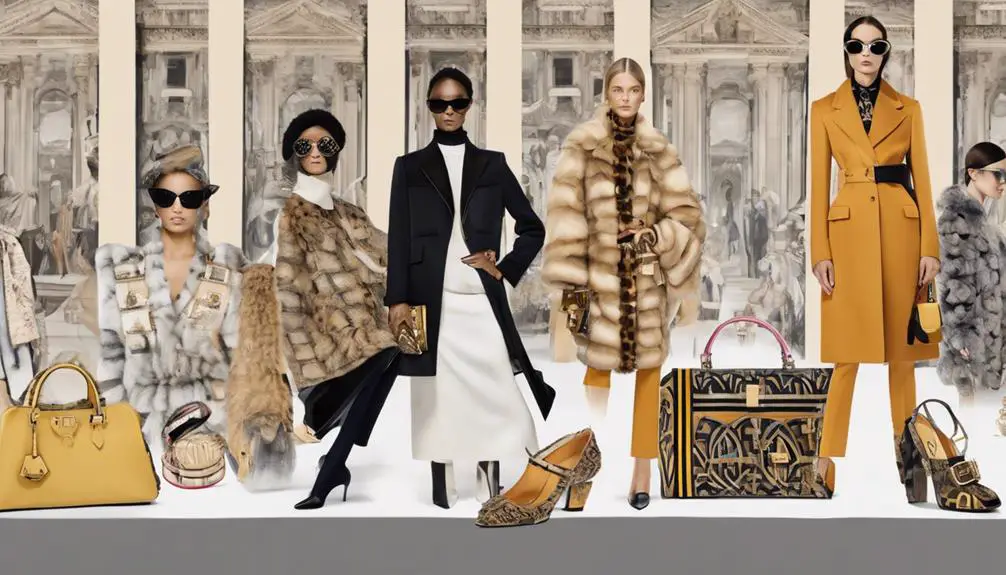
Fendi's design legacy is deeply rooted in the vision of its key designers, who've shaped the brand into a fashion powerhouse. This legacy began with the iconic Karl Lagerfeld, who served as the creative director from 1965 until his passing in 2019. His innovative designs and the famous Double F logo redefined Fendi's identity, setting a high standard in the fashion industry.
After Lagerfeld's departure, Silvia Venturini Fendi, a descendant of the founding sisters, took charge of accessories and menswear, ensuring the family legacy continued to thrive.
In September 2020, Kim Jones joined Fendi as the artistic director for couture and womenswear. He brought a fresh, contemporary perspective to the brand while paying homage to Lagerfeld's influence. His debut collection was a celebration of Fendi's rich history, seamlessly blending traditional craftsmanship with modern aesthetics.
Adding to this dynamic leadership, Delfina Delettrez Fendi, Silvia's daughter, became the artistic director of jewelry in 2021. Her appointment symbolizes the next generation of Fendi's creative vision, infusing youthful energy into the brand while honoring its storied past.
Together, Kim Jones, Silvia Venturini Fendi, and Delfina Delettrez Fendi represent a new era for Fendi, one that emphasizes a unique blend of innovation and heritage. Their collaboration showcases the brand's commitment to evolving within the fashion industry while staying true to its roots, ensuring that Fendi remains a beloved name for generations to come.
Karl Lagerfeld's Influence
Few designers have left as profound an impact on the fashion world as Karl Lagerfeld did during his tenure at Fendi. Joining the brand in 1965 as its creative director, Lagerfeld revitalized Fendi, shaping its design aesthetic for over five decades. His innovative approach to luxury fur and the introduction of iconic elements defined the brand and set trends that resonated throughout the industry.
Additionally, his work paralleled the evolution of luxury fashion brands, reflecting broader cultural influences and consumer desires, similar to how Gucci's brand history showcases its adaptability over time.
Here are three key contributions Lagerfeld made to Fendi:
- Double F Logo: He created the iconic Double F logo, which stands for "Fun Furs." This logo became a symbol of Fendi's luxury fur offerings, elevating the brand's status in the fashion hierarchy.
- First Ready-to-Wear Collection: In 1977, Lagerfeld launched Fendi's first ready-to-wear collection, expanding the brand's product range beyond its traditional leather goods and fur. This move brought Fendi into the domain of contemporary fashion, appealing to a broader audience.
- Innovative Fur Techniques: Karl's artistic direction transformed how fur was perceived. He showcased techniques that merged traditional craftsmanship with modern styles, making Fendi a leader in the luxury fur market.
Lagerfeld's legacy remains palpable in Fendi's current collections, with new creative directors like Kim Jones continually drawing inspiration from his visionary work. His influence is undeniable, ensuring that the spirit of innovation he championed lives on in the heart of Fendi.
Current Artistic Directors

Three visionary leaders currently helm Fendi's creative direction, each bringing their unique perspective to the iconic brand. At the forefront is Kim Jones, who stepped into the role of artistic director for couture and womenswear in September 2020, succeeding the legendary Karl Lagerfeld after his passing in 2019.
Jones infuses luxury fashion with his modern flair, ensuring that Fendi remains at the cutting edge of couture.
Silvia Venturini Fendi, one of the founding Fendi sisters, continues to play a pivotal role by overseeing accessories and menswear collections. She's dedicated to preserving the brand's rich heritage and craftsmanship, blending timeless designs with contemporary elements.
Her insights and deep-rooted knowledge of Fendi's legacy make her an invaluable asset to the family business.
Adding a fresh perspective, Delfina Delettrez Fendi, Silvia's daughter, took the helm as artistic director for jewelry in 2021. Her innovative designs breathe new life into Fendi's jewelry line, marrying traditional craftsmanship with modern aesthetics, resulting in pieces that truly resonate with today's luxury consumers.
Together, this trio embodies a collaborative approach to creative leadership, seamlessly blending traditional aesthetics with modern innovation.
However, with Kim Jones announcing his plans to step down in October 2024, Fendi is actively searching for a new visionary to carry the brand forward.
The future of Fendi is bright, promising a continued evolution in the world of luxury fashion.
Collaborations and Campaigns
As Fendi continues to evolve under the creative direction of its talented leaders, the brand's collaborations and campaigns play a significant role in shaping its identity. With a rich history of high-profile partnerships, Fendi's advertising strategy embraces innovation while ensuring brand integrity.
The legendary Karl Lagerfeld was pivotal in crafting the visual identity of Fendi through his photography until 2019, but now celebrated photographers like Philip-Lorca diCorcia and Steven Meisel carry that torch.
Here are three standout aspects of Fendi's collaborations and campaigns:
- Celebrity Engagement: The brand often features prominent figures, like Mark Ronson in 2012 and Naomi Campbell in 2023, to boost visibility and connect with fashion-forward audiences.
- Cultural Collaborations: Fendi's partnerships with films such as *Once Upon a Time in America*, *Evita*, and *The Royal Tenenbaums* showcase its cultural influence, blending fashion with cinema in a creative narrative.
- Innovative Marketing: Recent campaigns have included contemporary artists and influencers, aligning with Fendi's commitment to visually striking storytelling, ensuring that the brand remains relevant and exciting in today's fast-paced fashion landscape.
Through these collaborations, Fendi not only enhances its market presence but also reinforces its commitment to innovative, high-quality fashion.
Each campaign reflects a blend of creativity and strategic marketing, ensuring that Fendi remains a significant player in the luxury fashion arena.
Legacy and Future Direction
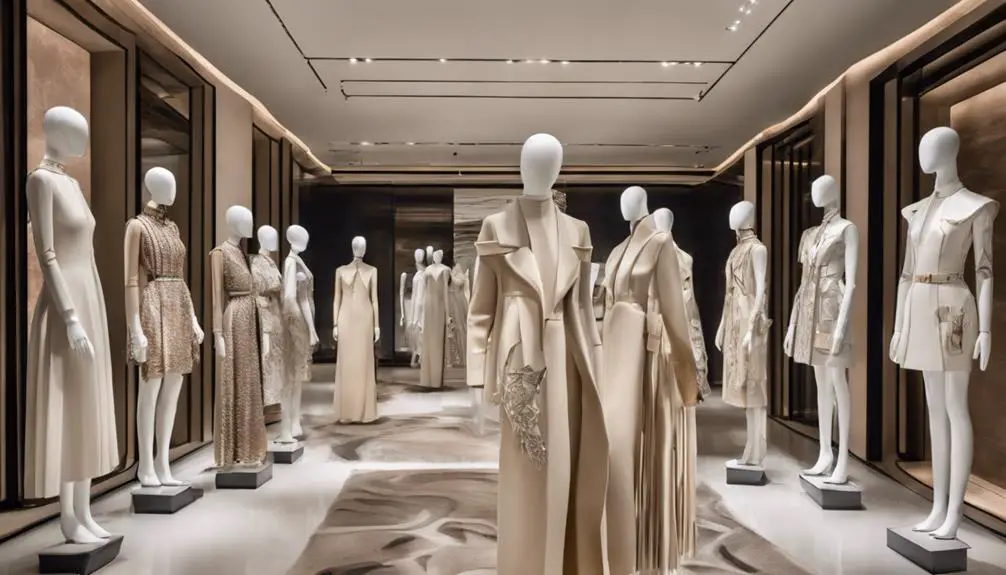
Fendi's legacy is deeply intertwined with the visionary Karl Lagerfeld, who shaped the brand's identity from 1965 until his passing in 2019. His innovative approach to fur design and branding not only established a strong identity for the house but also set the standard for luxury goods in the fashion industry.
The brand's evolution is reflected in its vintage logo development, showcasing a shift from detailed illustrations to modern, minimalistic designs. After Lagerfeld, Silvia Venturini Fendi took over the menswear and womenswear collections, embracing her family's heritage while infusing fresh perspectives.
In September 2020, Kim Jones joined as artistic director for couture and womenswear, marking a thrilling new chapter in Fendi's creative direction.
However, with Kim Jones announcing his departure in October 2024, you might wonder about the future direction of the brand. The collaborative efforts of Silvia Venturini Fendi and her daughter Delfina Delettrez Fendi remain pivotal, ensuring Fendi adapts to contemporary fashion trends while honoring its storied past.
Their commitment to blending heritage with modernity keeps the brand relevant in a rapidly changing luxury market. As Fendi seeks new creative leadership, the excitement builds around who'll take the reins next.
The ongoing recruitment process reflects Fendi's dedication to evolving its design philosophy, ensuring that it not only celebrates its illustrious history but also paves the way for future innovations.
With this dynamic interplay of past and present, Fendi's legacy promises to thrive, engaging fashion enthusiasts around the world for years to come.
